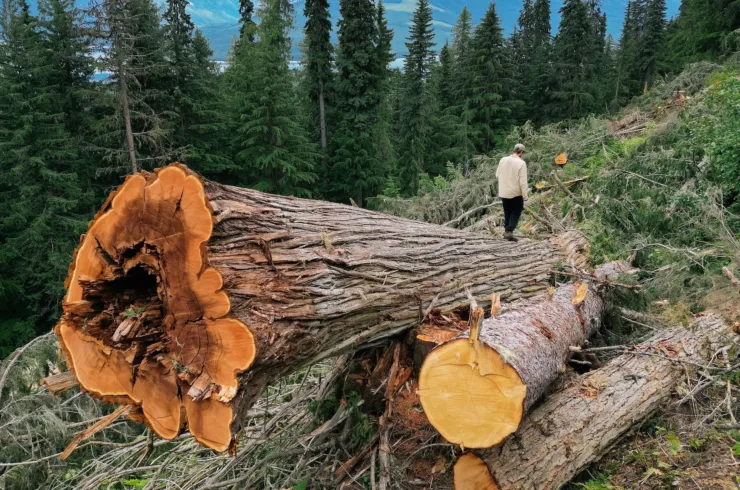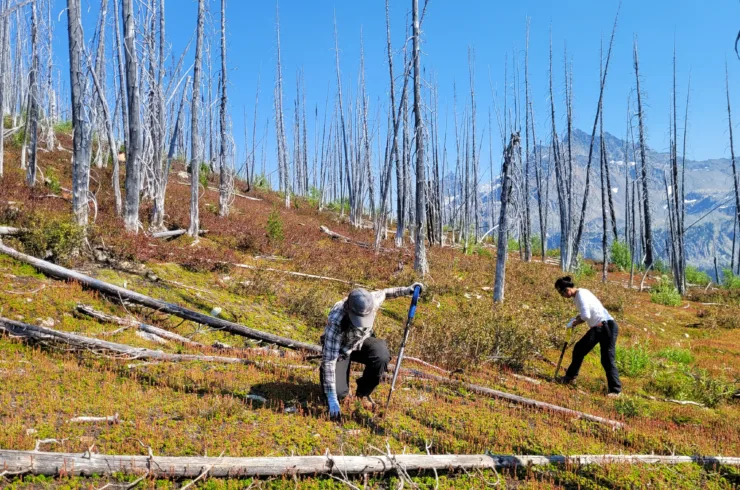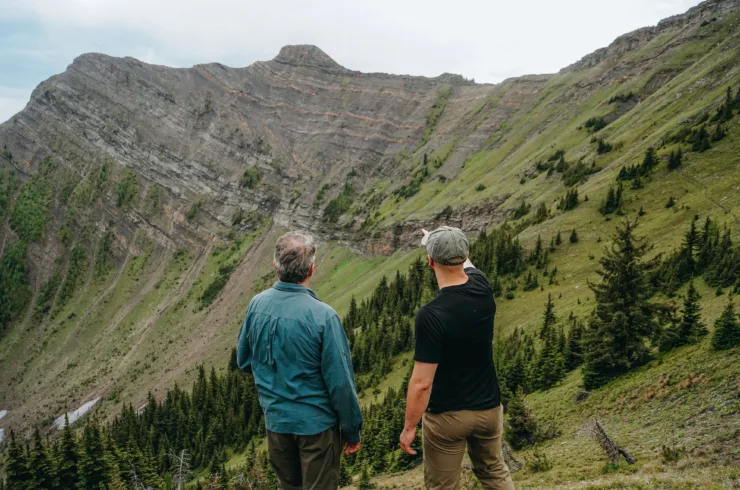Three months ago I walked through a magical cathedral forest where thousand-year-old cedar trees wrapped with green ‘car straps’, towered above six-foot-high devil’s club. I was among the last people to see these ancient beings — to bear witness to the lives of some of British Columbia’s Inland Temperate Rainforest giants.
I went back to that same area last week, off the Red Rock FSR, east of Mica Dam. The cutblock is now almost entirely logged. Those same ancient trees that I walked beneath were stacked in a neat pile on a landing, and many had already been loaded onto logging trucks.
How is it that five years after the provincial government committed to implementing BC’s old growth strategic review, this is still able to happen? How is it that the most valuable and at-risk old growth is still being logged in a region where old growth logging deferrals have been implemented?
Let’s talk it through with on-the-ground examples of current and future old-growth logging plans.

Site 1: Red Rock, east of Mica — incorrectly aged at the time of logging deferrals
Standing in a clearcut surrounded by 600 to 1,400-year-old trees decked on a mud-soaked landing makes your heart scream. It’s ecological loss in the truest sense; an irreplaceable ecosystem that will never come back. It makes you angry, it makes you frustrated, it makes you wonder how this is still happening.
Old growth deferrals in our region have temporarily protected a lot of amazing forest from logging, but they’ve missed a lot of irreplaceable old forest as well.
The old growth Technical Advisory Panel recommended that the province: “Add areas of high-value old forest known on the ground but not shown on the maps. The maps will miss areas of high-value old forest, known well by people who walk the land. These omissions may be due to inventory error, the scale of analysis, or inclusion of additional criteria for identification.”
In the Revelstoke area, many old forests remain unprotected because they were underaged in the underlying Vegetation Resource Inventory (VRI). The VRI at the time of deferrals was from 1997 and based on aerial photo interpretation, sometimes making it inaccurate and prone to underaging certain forest types.
A new VRI was completed recently for the Revelstoke area. If the deferrals were re-run today, a forest like the Red Rock block would likely be captured. Instead, the Red Rock block did not get picked up by the deferrals because the block is underaged as a 237-year-old spruce stand in the VRI.
The bottom line, all of these complex issues result in the most at-risk and biologically significant old forests continuing to be logged and roaded.
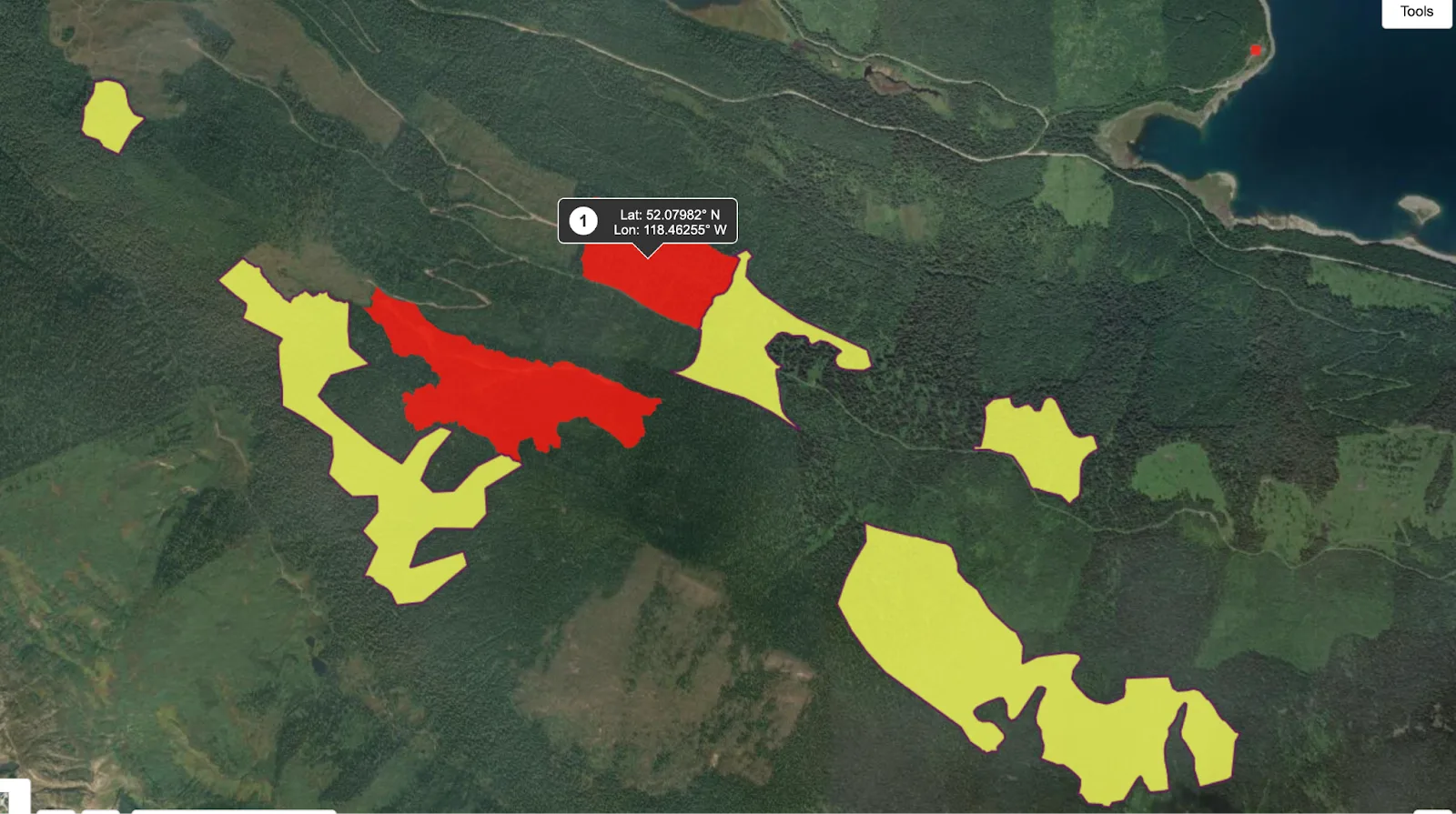
While this forest is now gone, there are adjacent blocks being proposed for logging that contain spectacular old-growth forests — forests that I’ve walked through. Stella Jones is proposing to log 250 hectares of primarily old forest in nearby blocks C04036,C04033, CO4031, CO4032; the province has yet to approve these blocks. All proposed blocks are provincially identified core caribou habitat.

Site 2: Old Camp Creek — directly adjacent to old growth, but not field verified
This summer, my partner Bailey and I walked through a wide open, ancient forest; the understory was pure oak fern that swayed in the wind amongst gnarled hemlocks and ancient cedars. Many of those cedars were wrapped with green ‘car straps’. The bones of these ancient trees are prone to shattering when they’re cut down, so loggers wrap them with strong straps in hope of holding them together.
As we walked further into the forest, we reached a section where logging had already begun. Ancient cedars lay felled on the ground, while at the edge of the block I heard the wonderful songs of a swainson’s thrush and a golden crowned kinglet; these birds, who had just completed continent-spanning migrations, were about to lose their homes.
We were in Old Camp Creek, a tributary of the Goldstream River in the Northern Selkirks that has experienced significant logging along its banks in recent years. Over the next few months, Pacific Woodtech would finish logging this ancient forest, known as Cutting Permit 252, block 1, to industry and government. The block overlaps provincially defined core habitat for the Columbia North caribou herd and is directly adjacent to old growth deferral.
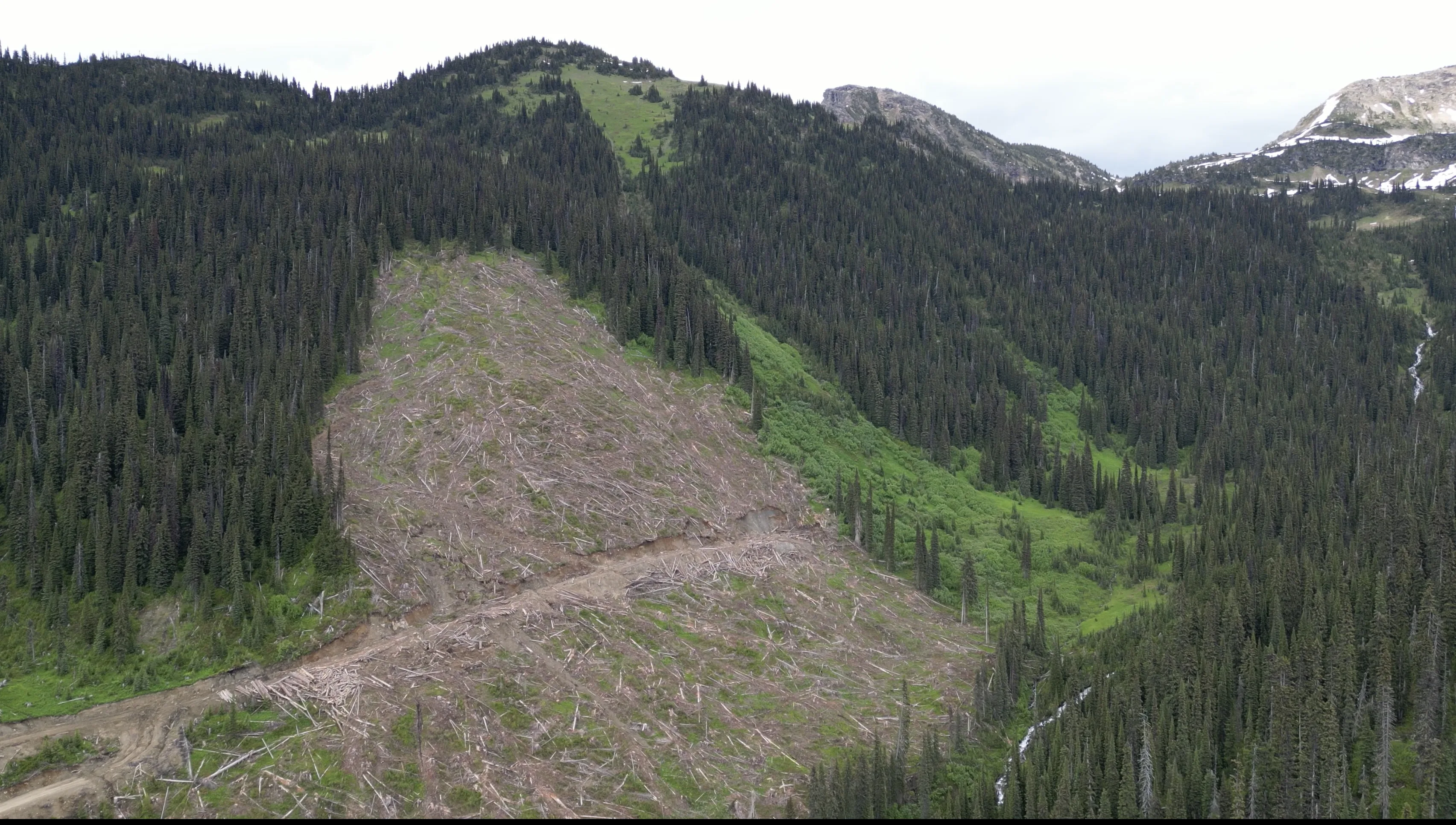
Licensees should be required to field validate outside of deferral polygons. Current provincial guidance states: “There is no need to collect field verification data if a stand is not currently mapped as a Priority Old Forest Deferral or is not being considered as a Replacement Priority Old Forest Deferral Area”.
Kootenay Boundary regional guidance also does not require licensees to look for exceptional and irreplaceable old growth that was missed in the TAP mapping when they develop cutting permits and blocks. While there is a process to remove a deferral and replace it with a new deferral elsewhere, no process exists to add in areas missed by the deferrals.
When logging companies have access to better technology than government and biologists, they can use that technology like LIDAR (a remote sensing technology that can be used to measure tree heights across broad areas) to find the biggest, rarest and oldest forests to log. That continues to be the case.
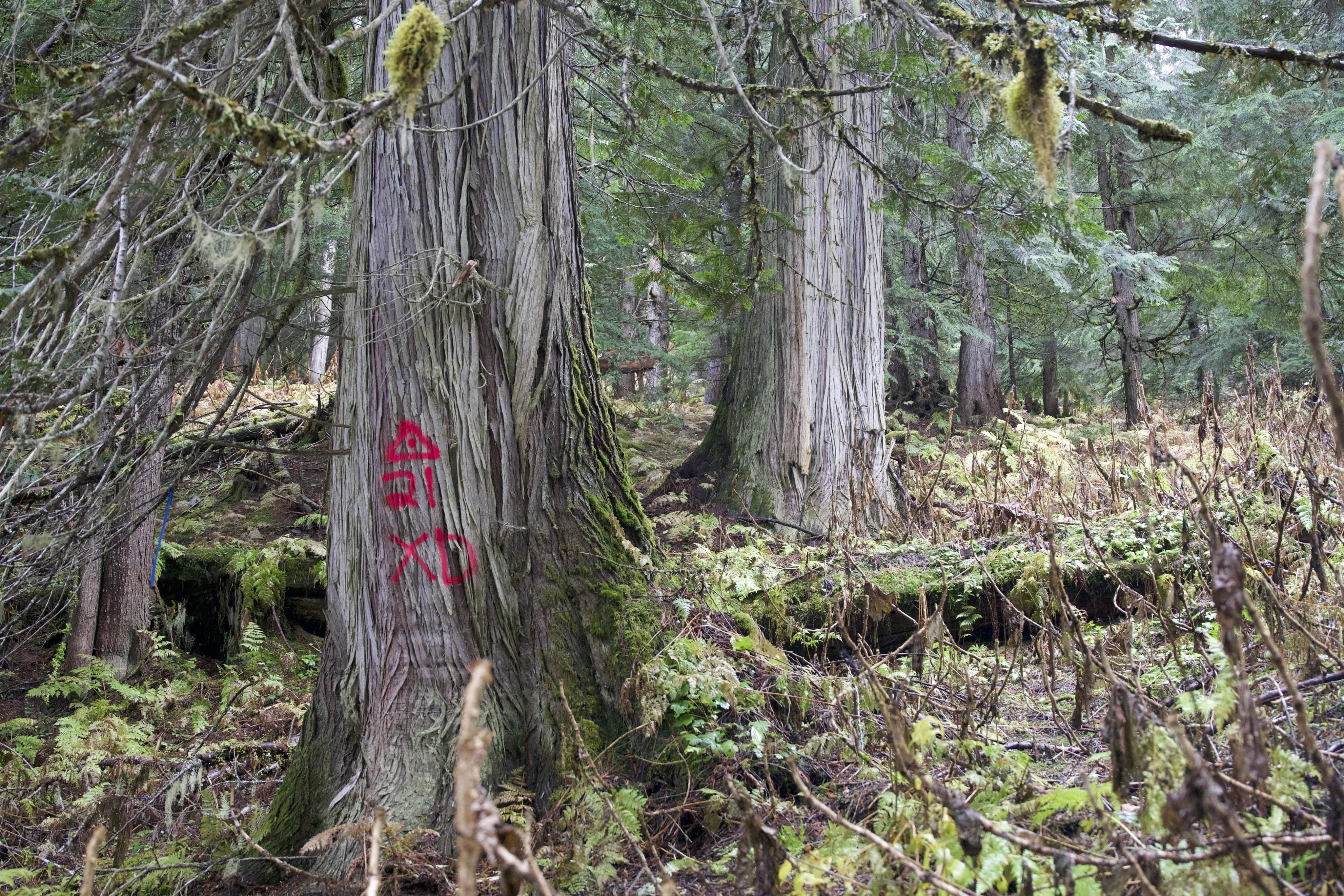
Site 3: Downie Creek — a proposed road through the middle of ‘protected’ forest
It’s a cold, rainy late-October day up Downie Creek. My pants are soaked, my boots weigh three more pounds than when I left the truck, and my camera lens keeps fogging up. I’m walking through a forest that the Revelstoke Community Forest Corporation (RCFC) has proposed to cut a road through in order to log a cutblock. The proposed road will cut for nearly a kilometer through old growth forest that has been deferred from logging. In the process it will destroy countless ancient trees and fragment an ecosystem that has been developing for thousands of years.
This is the primary way protected old growth in our region has been impacted. In order to access the Red Rock block east of Mica, the forestry company also legally punched a road through 200 metres of an old-growth deferral area that contained ancient forests.

Logging companies can still build roads through these protected areas in order to “access isolated timber”. It’s a loophole that continues to result in the highest risk forests being fragmented and chopped up into smaller and smaller forests.
The forest up Downie Creek is magic; a cathedral of cedars, devils club everywhere, rare oceanic lichens clinging to hemlock branches. But the road line goes right through the middle of it. Ancient two-metre-diameter cedars are spraypainted and red road centreline tape is hung from branches, foreshadowing this forest’s future.
It’s a hard pill to swallow knowing that a road could be punched through this ancient forest. As I near the end of the proposed roadline through the deferral, I spook a moose and hear its lanky legs thrashing through sticks and devil’s club. Rain soaked, I head back the way I came — a long walk through an ancient cedar forest.
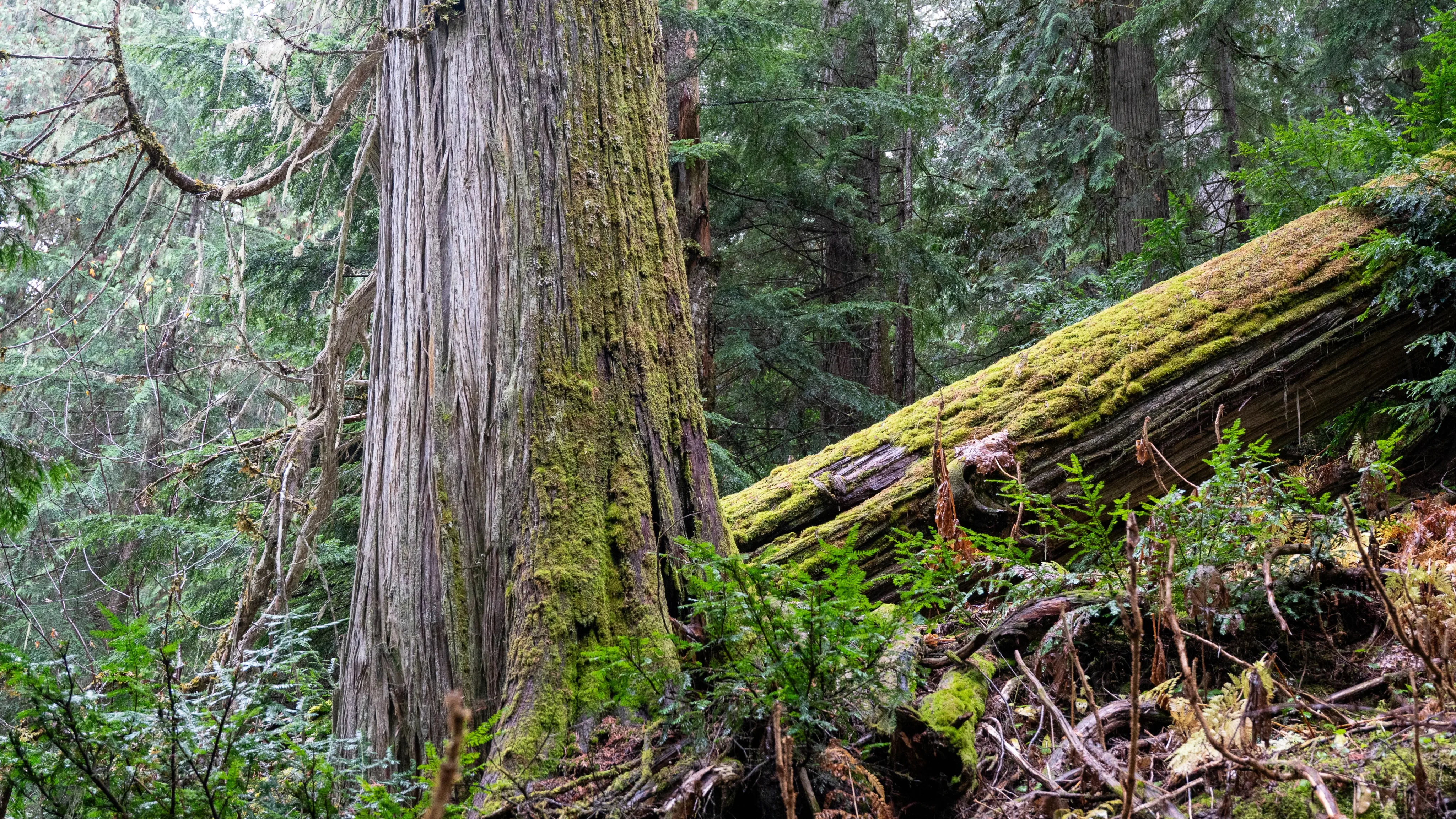
Site 4: Downie Creek #2 — missed in the deferrals, fragmented but precious
Further up the Downie, a spur road switches back up the mountain side. Between these switchbacks an amazing old forest exists. It’s fragmented and relatively small, but it’s still a marvel of the Inland Temperate Rainforest. Ancient cedar trees are draped in lichen, and hemlock snags sport countless cavities from nesting birds.
This forest has been laid out as a proposed cutblock by RCFC, but the province has yet to approve this cutting permit. This forest was simply missed by the deferrals.
This forest is far too biologically valuable to be logged. As I walk back to my truck soaked to the bone, I’m hoping that the next time I return here, it won’t be to take ‘after shots’.
Sitting on the tailgate of my truck, I wonder what it will take to meaningfully change what’s happening on the ground. I think about how, five years after the provincial government committed to BC’s old growth strategic review, old and ancient forest logging is thriving in the Inland Temperate Rainforest. I think about how we’ve understood the importance of old growth forests since Jerry Franklin’s landmark papers in the 1970s, yet we continue to fail them. The question now is whether our collective voices will be loud enough to give political leaders like Premier Eby the courage to take meaningful action to protect them.


